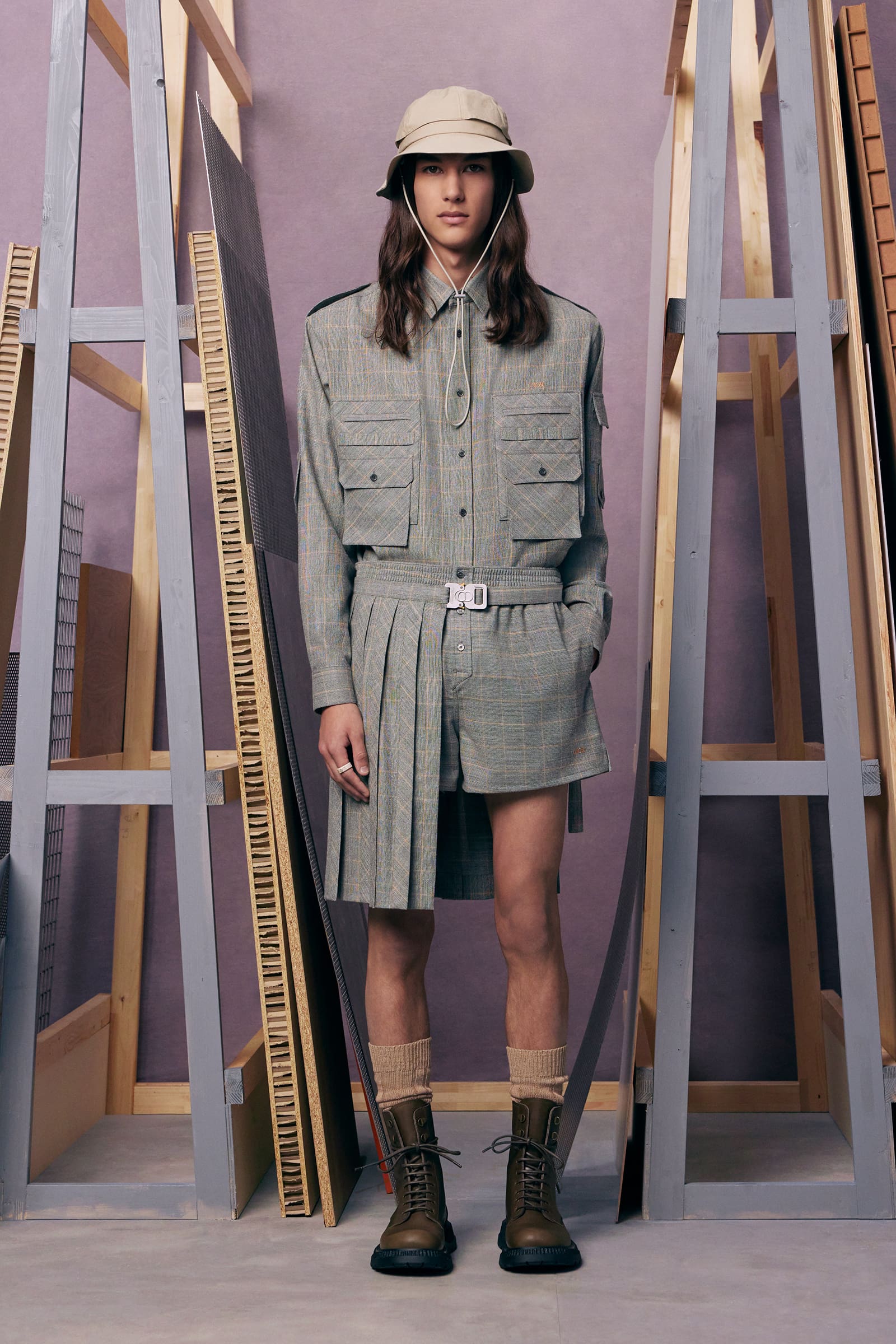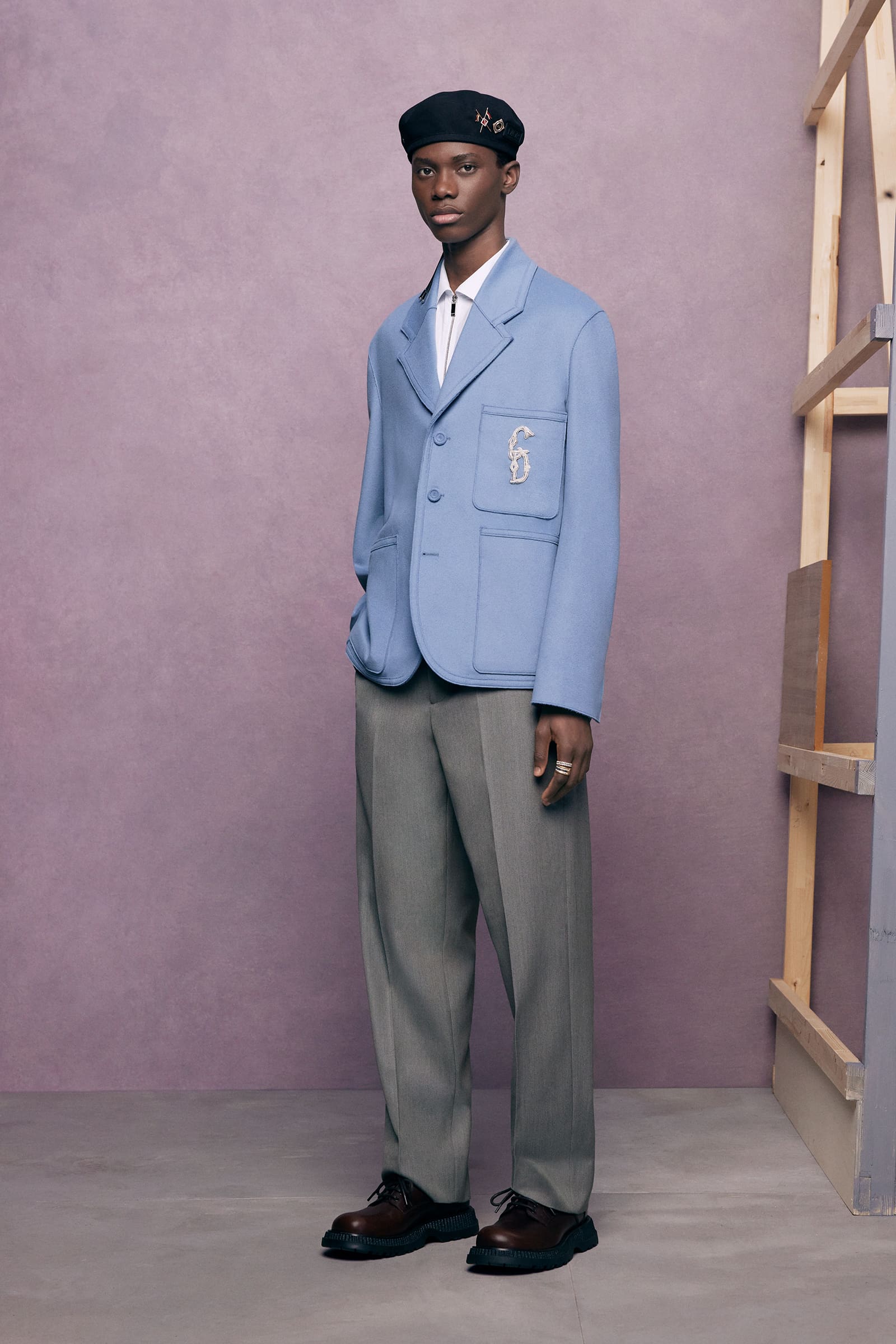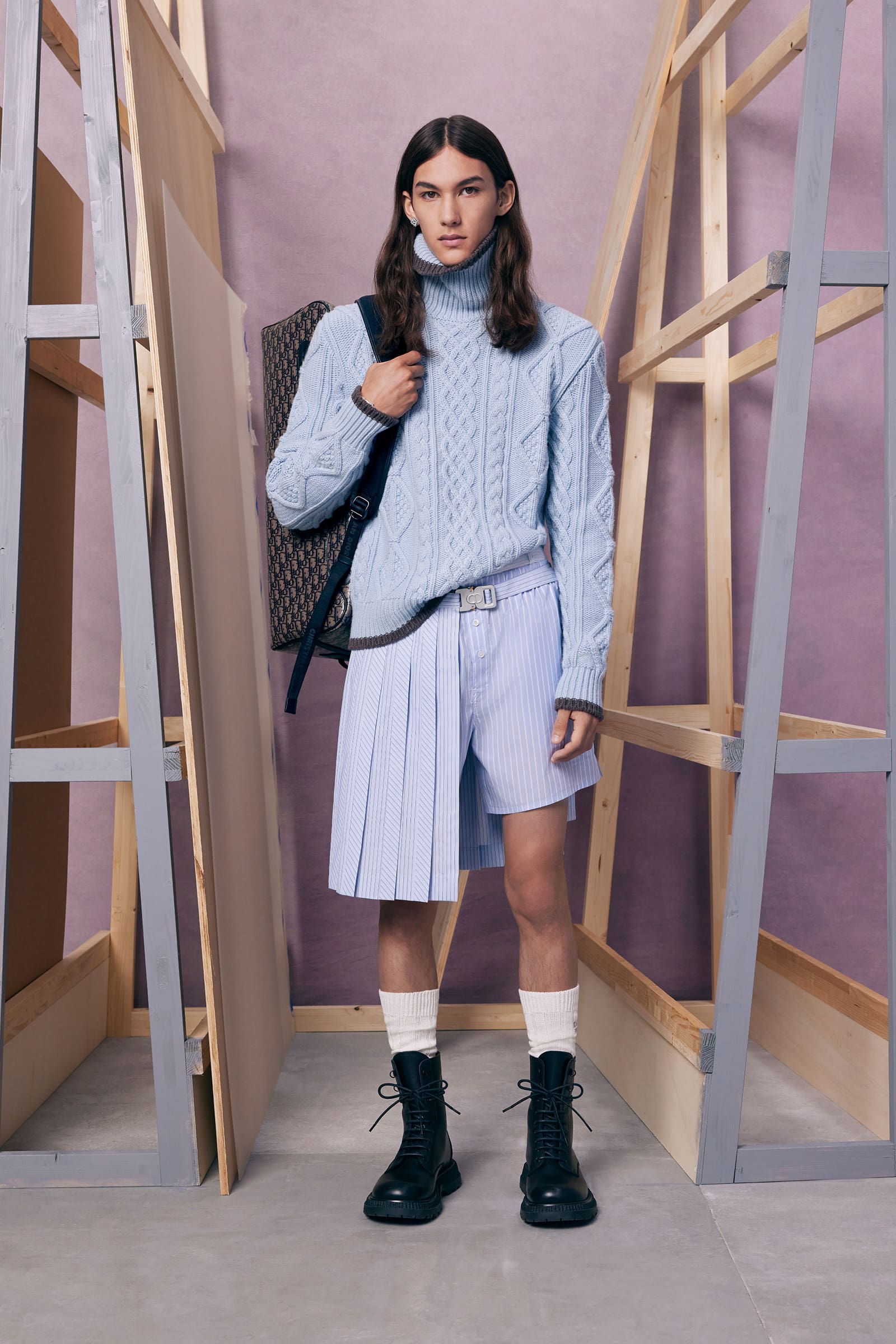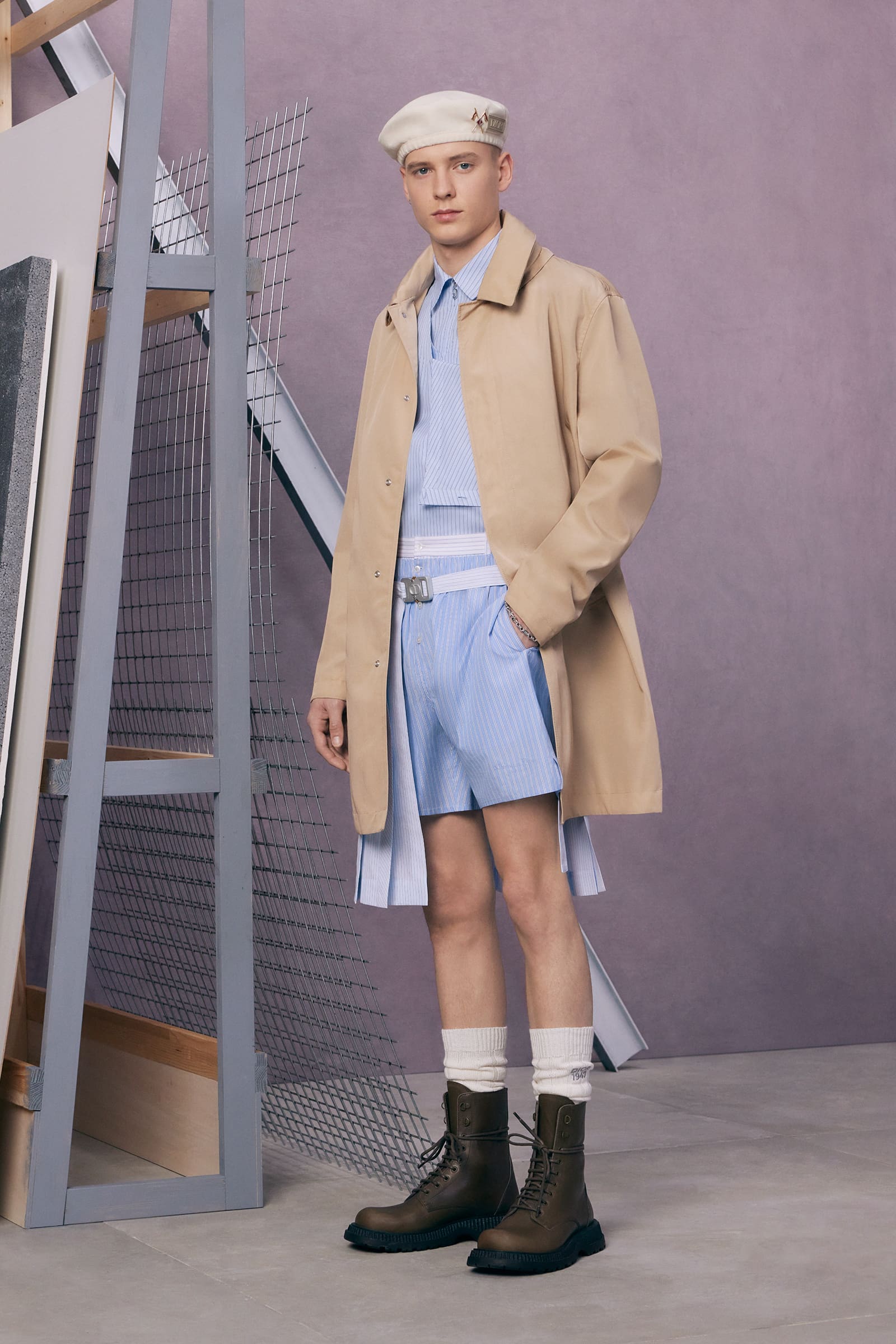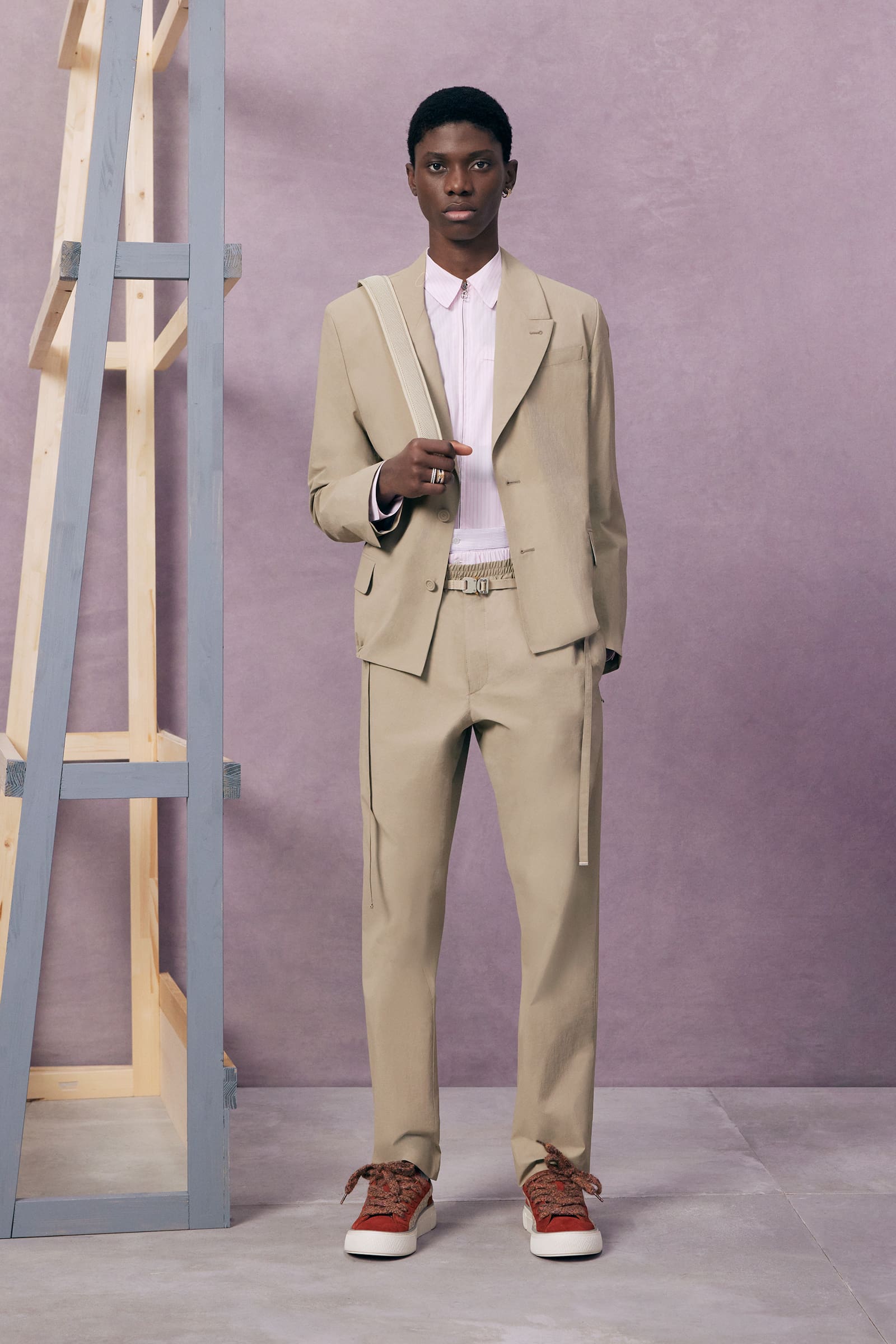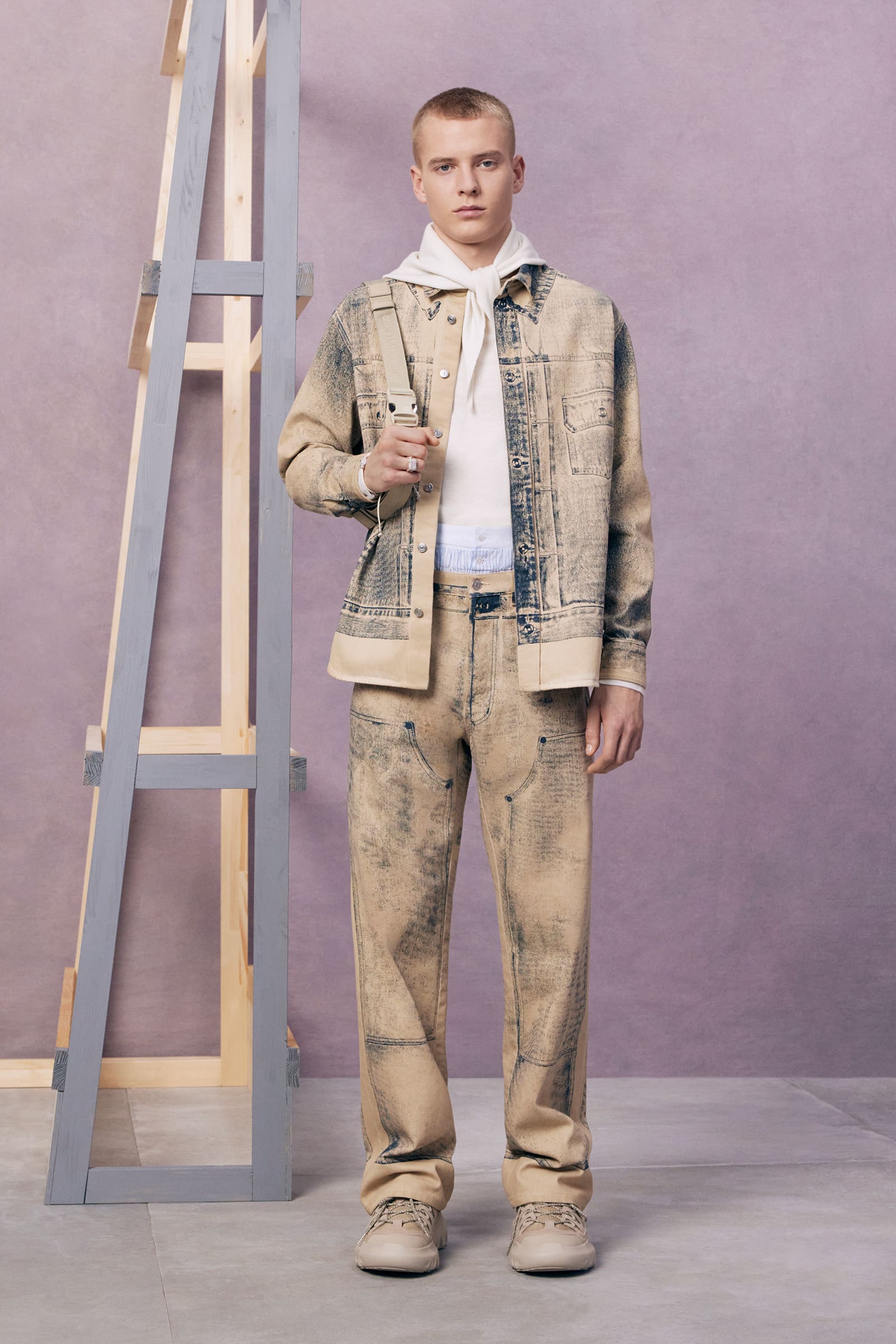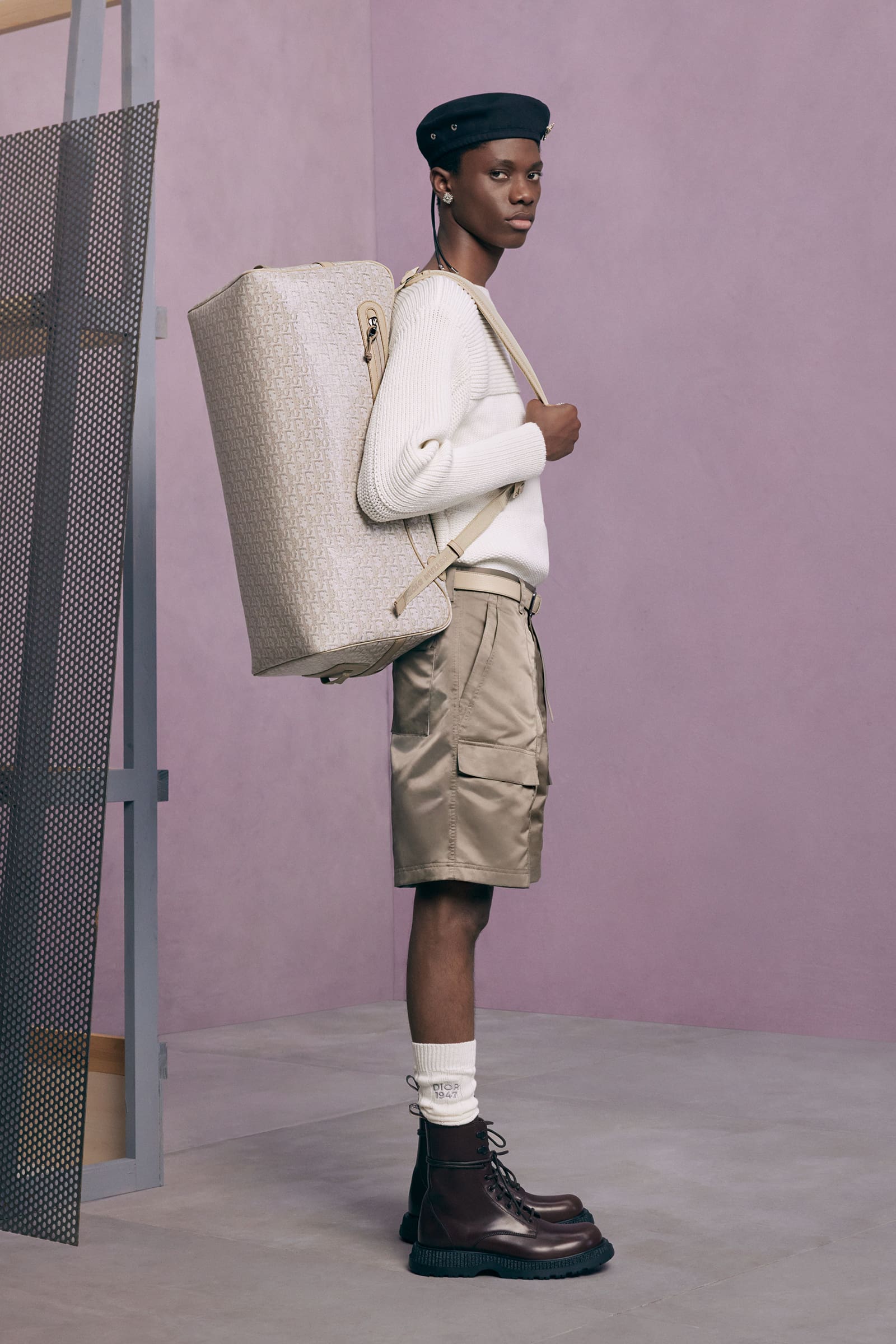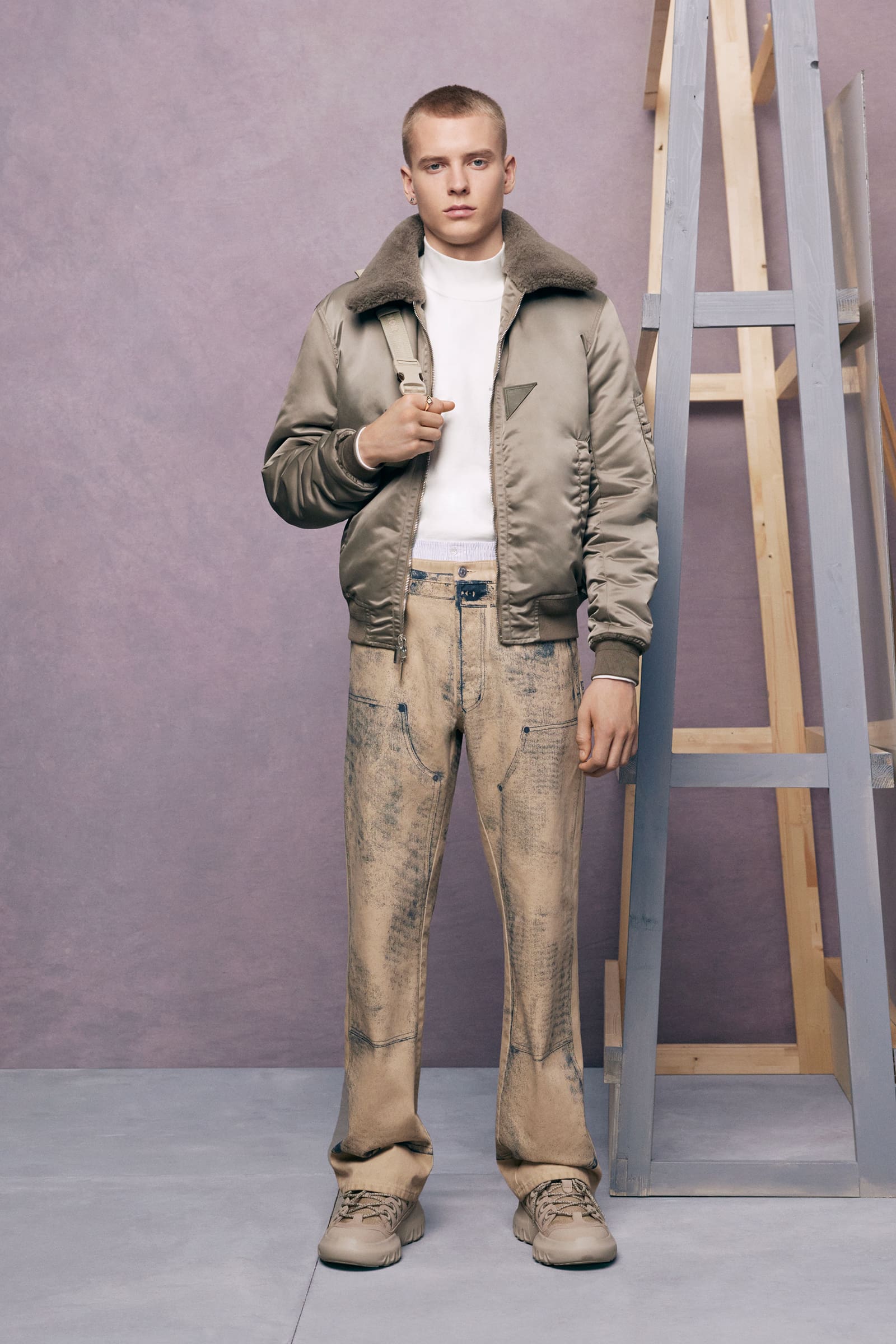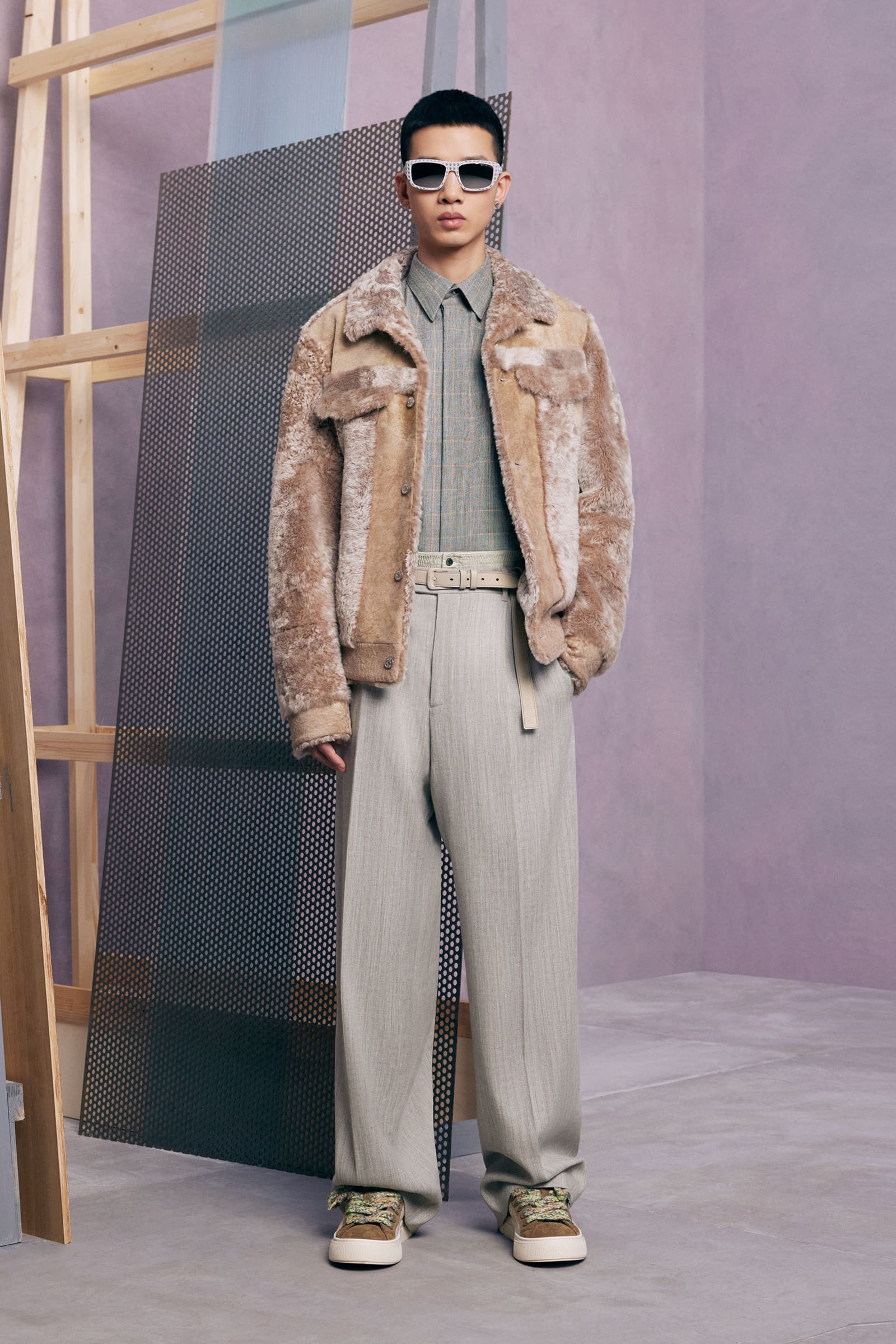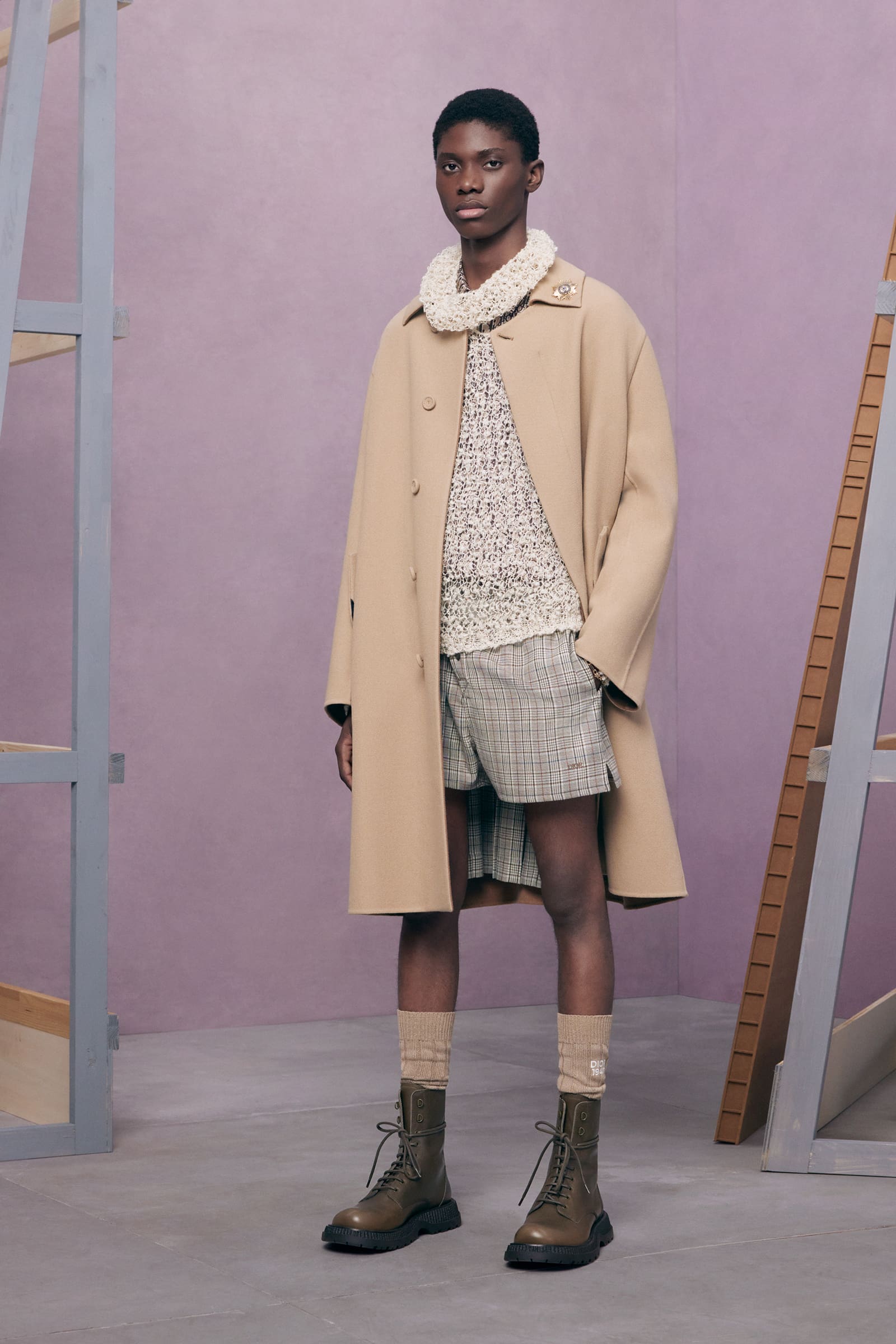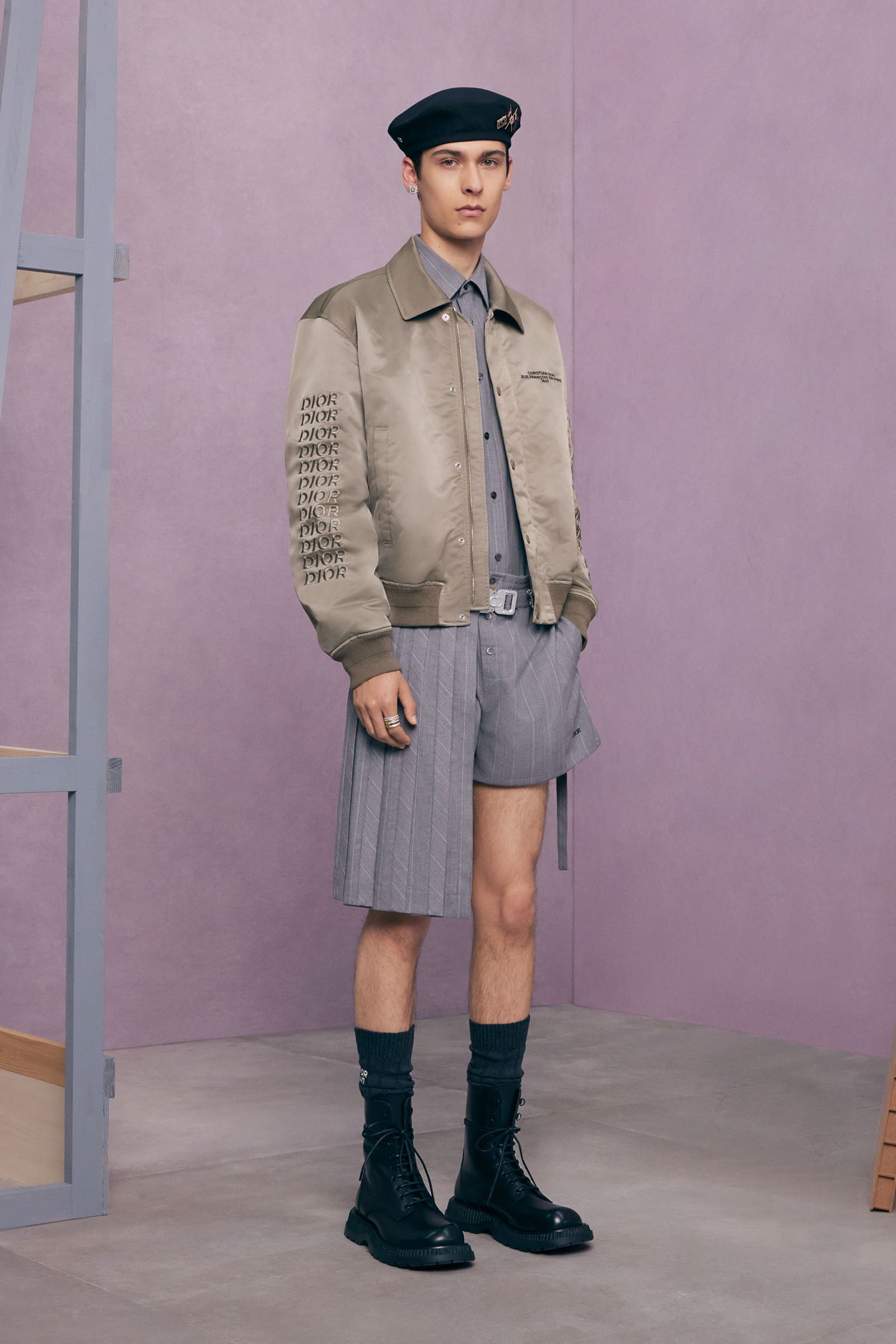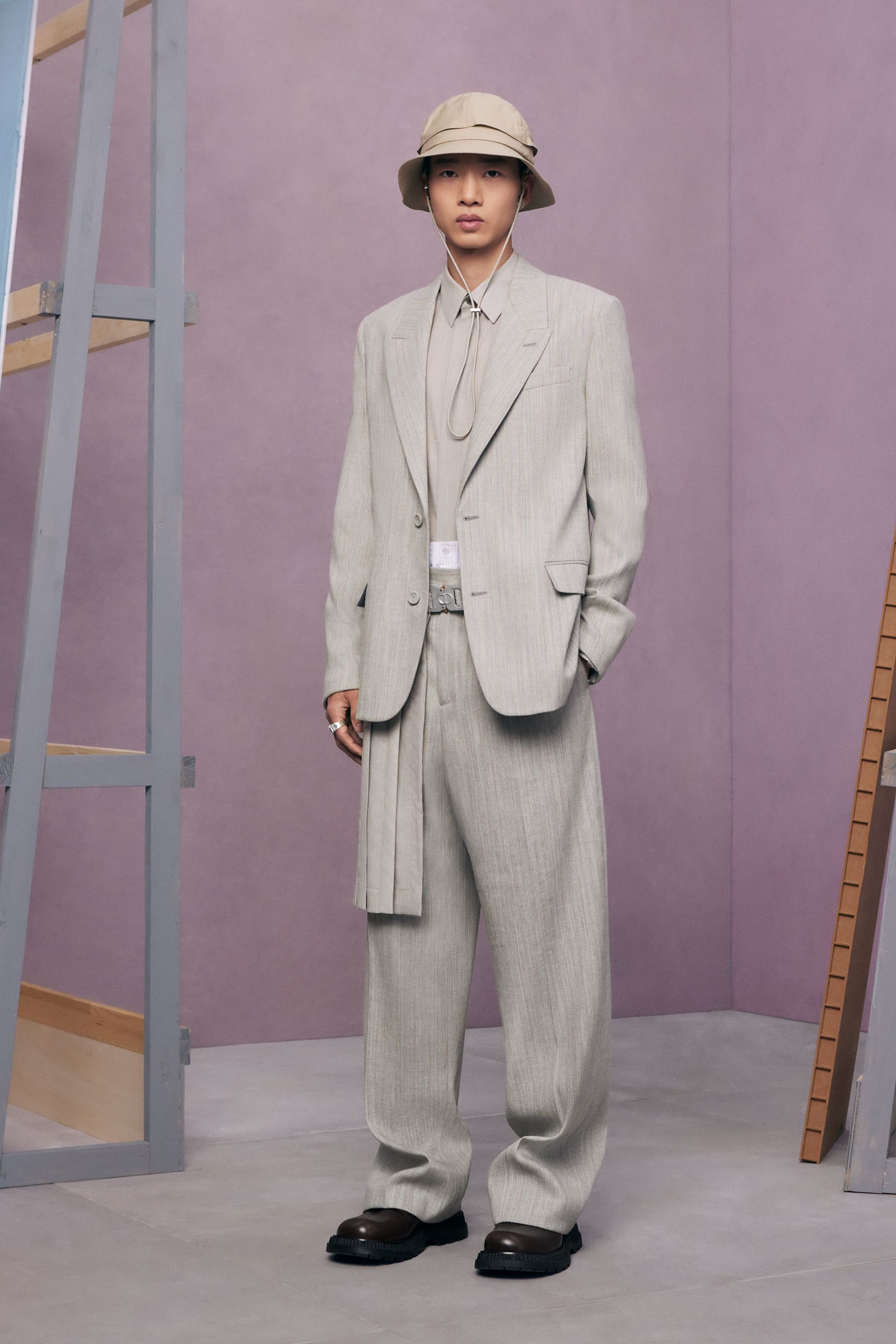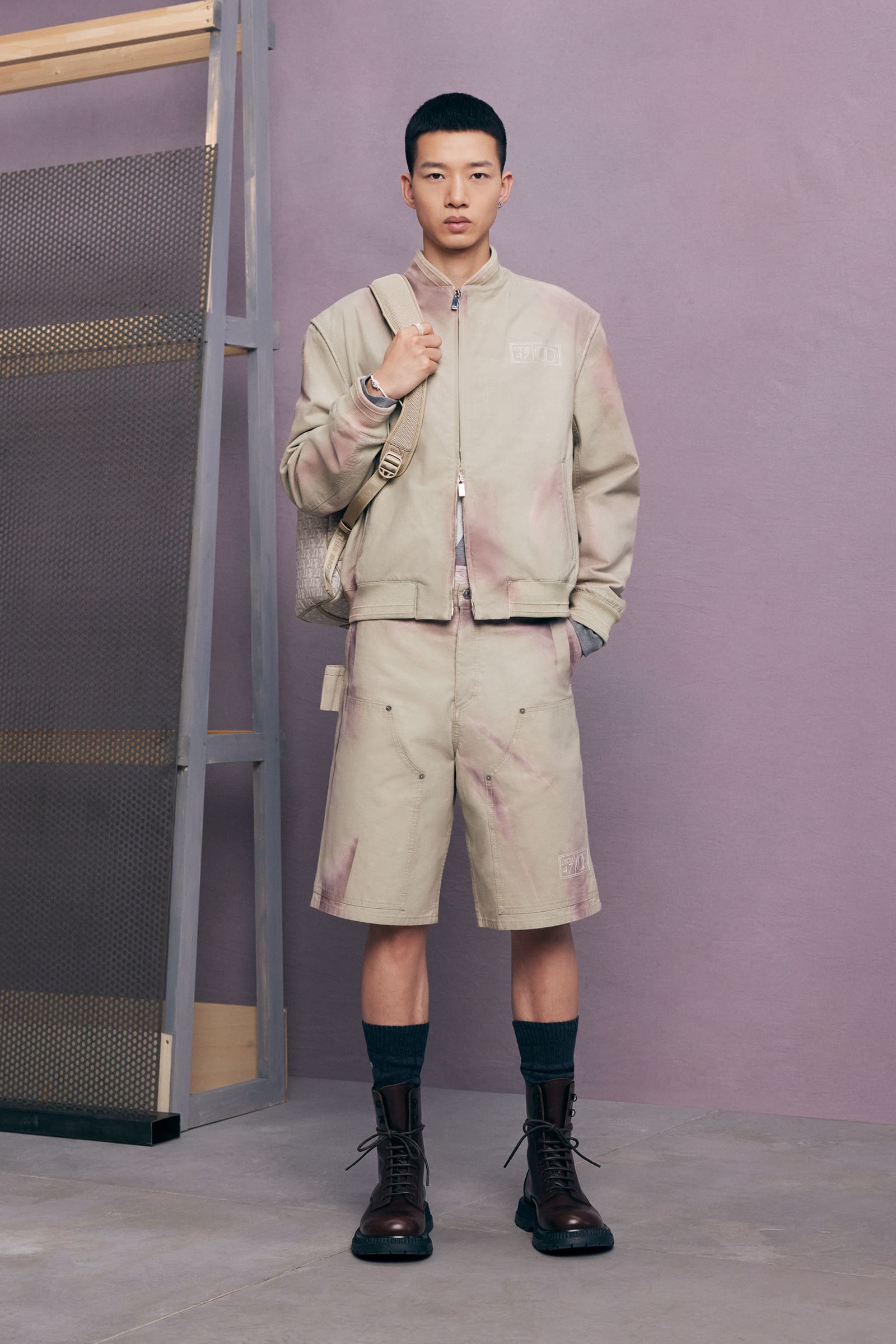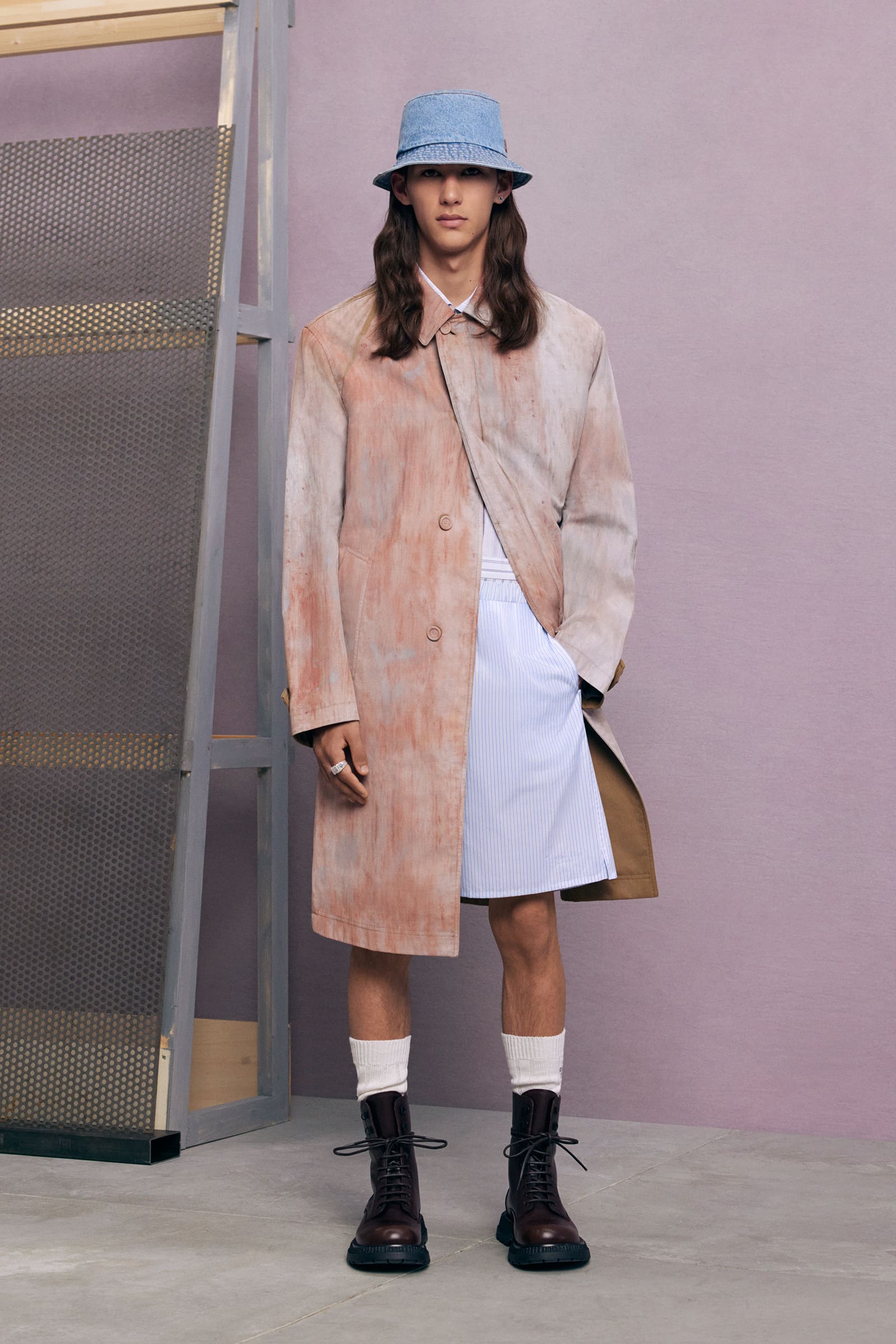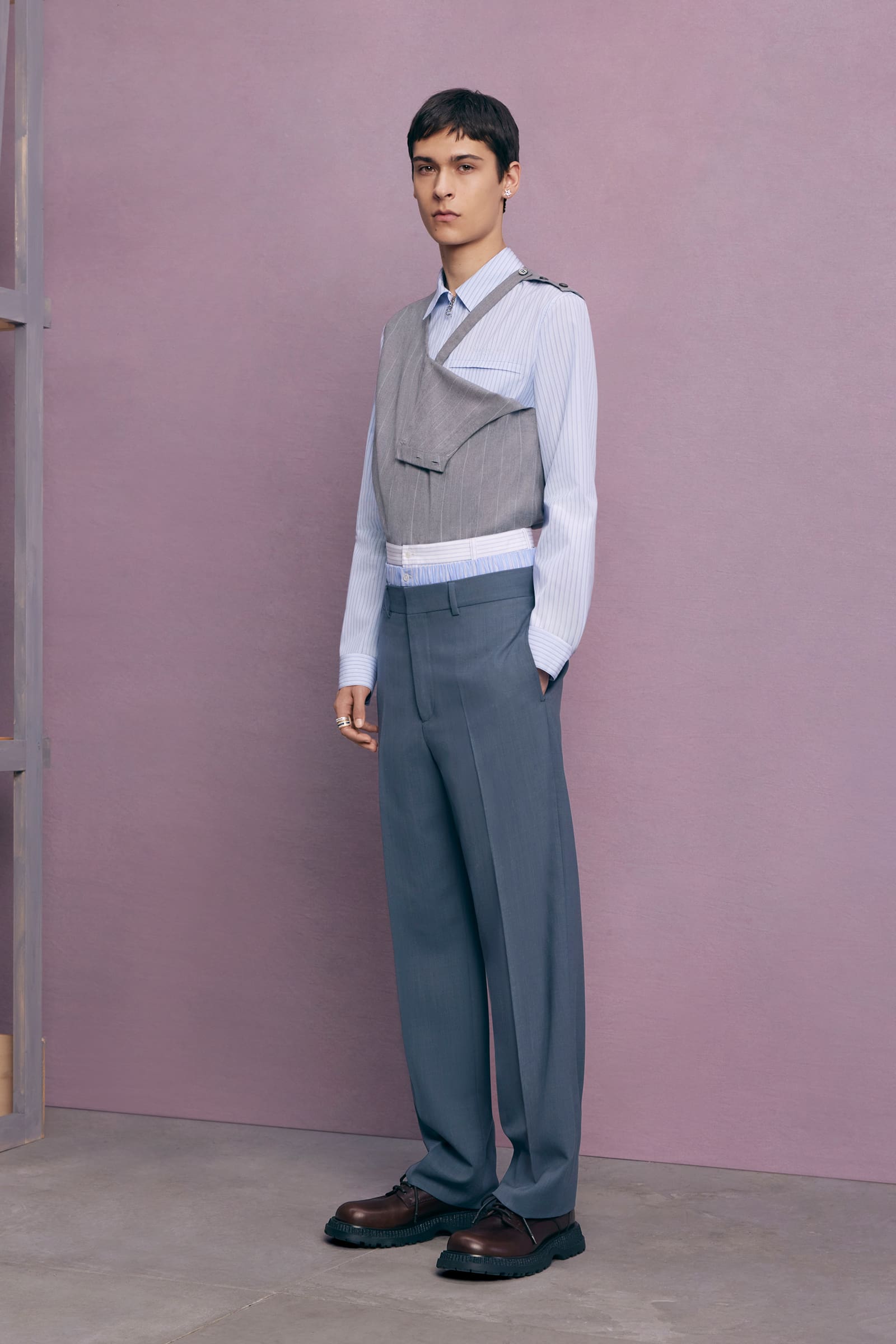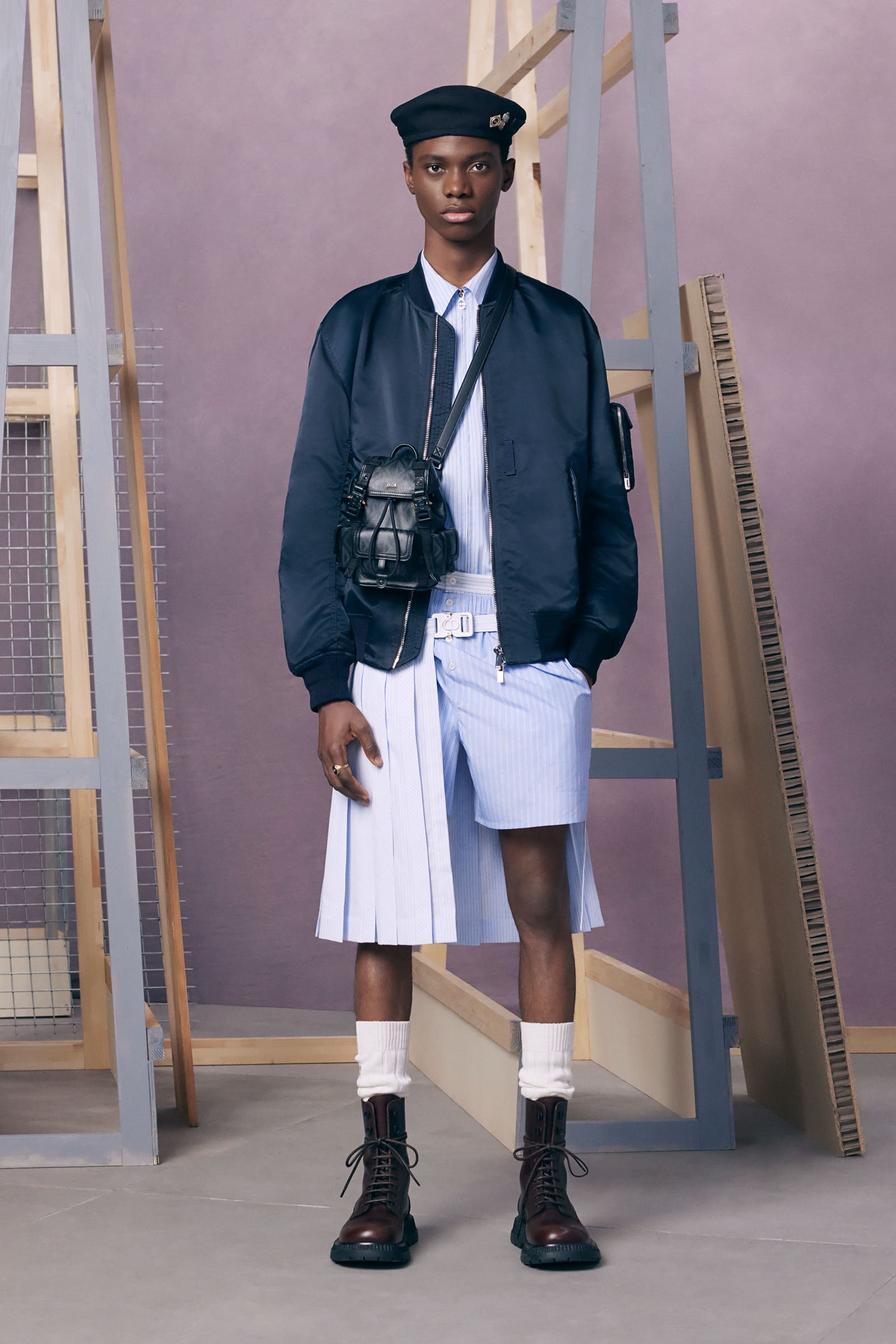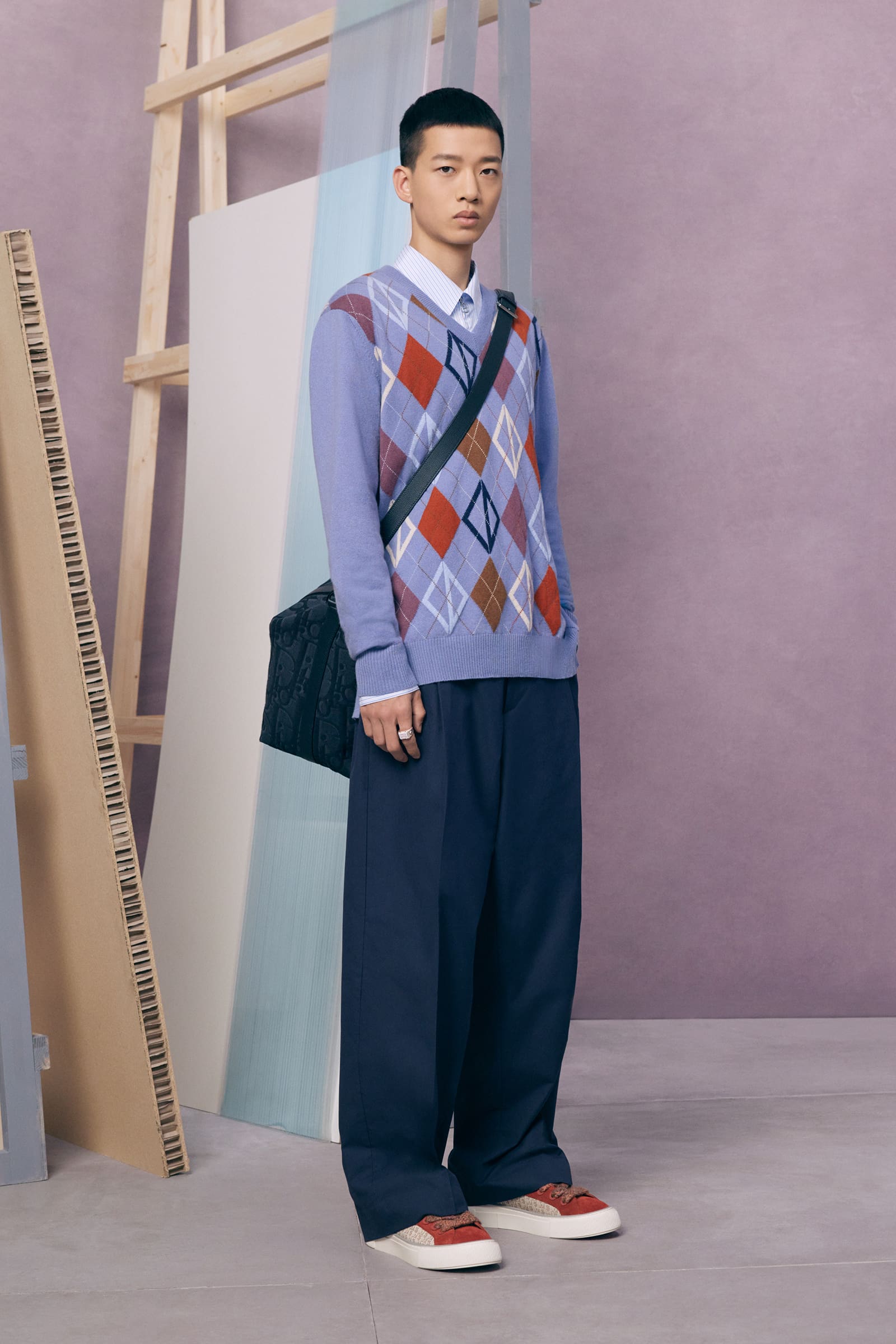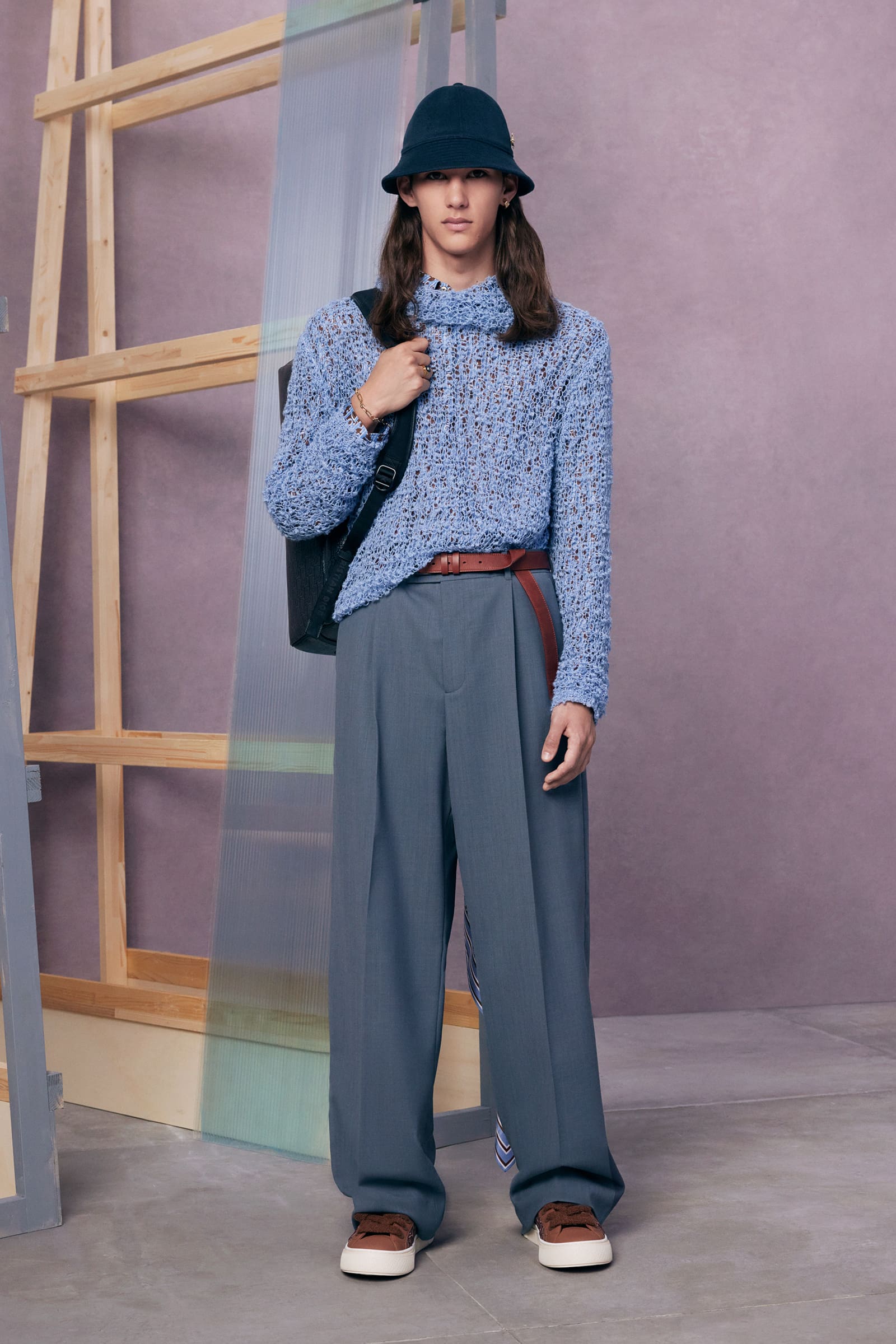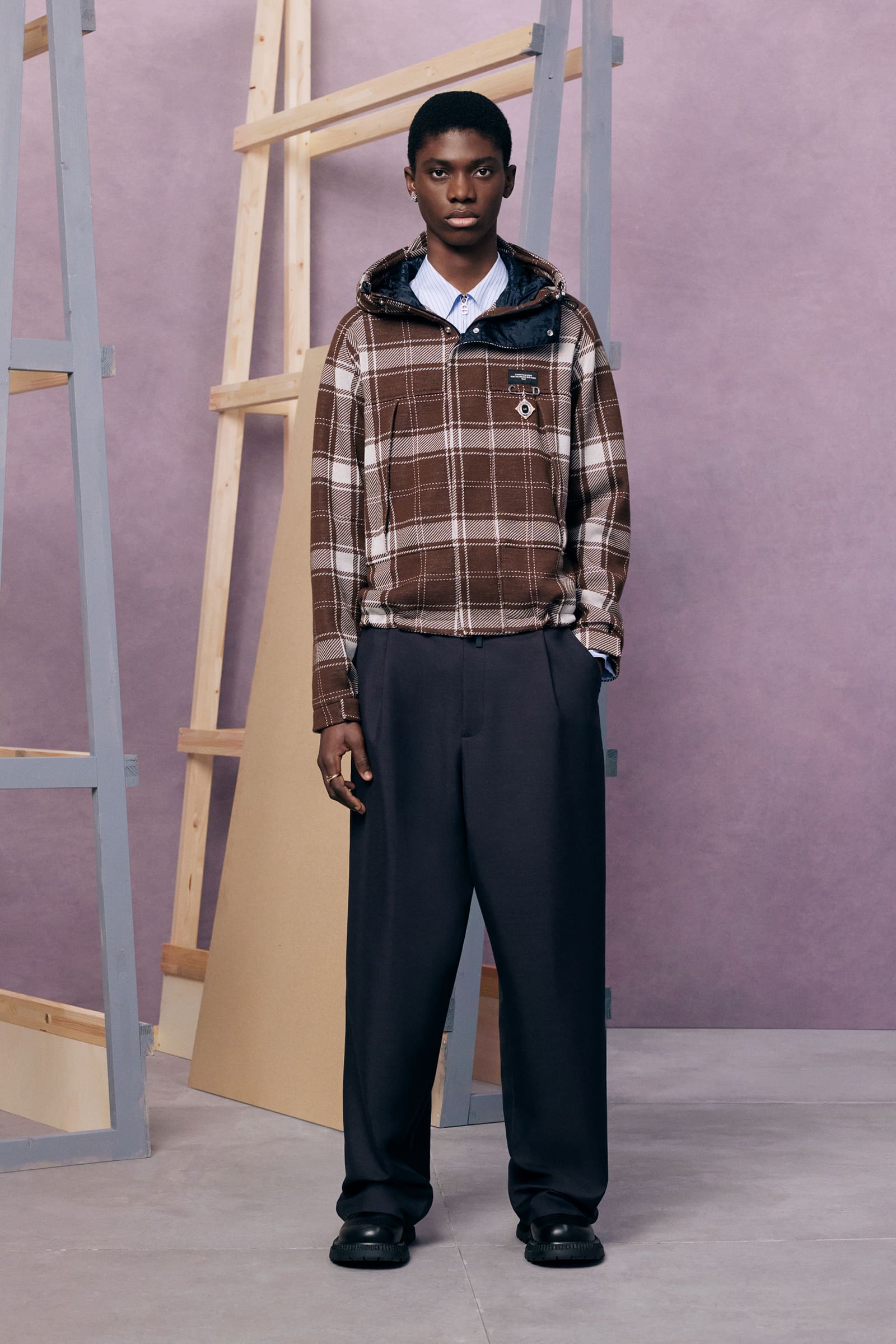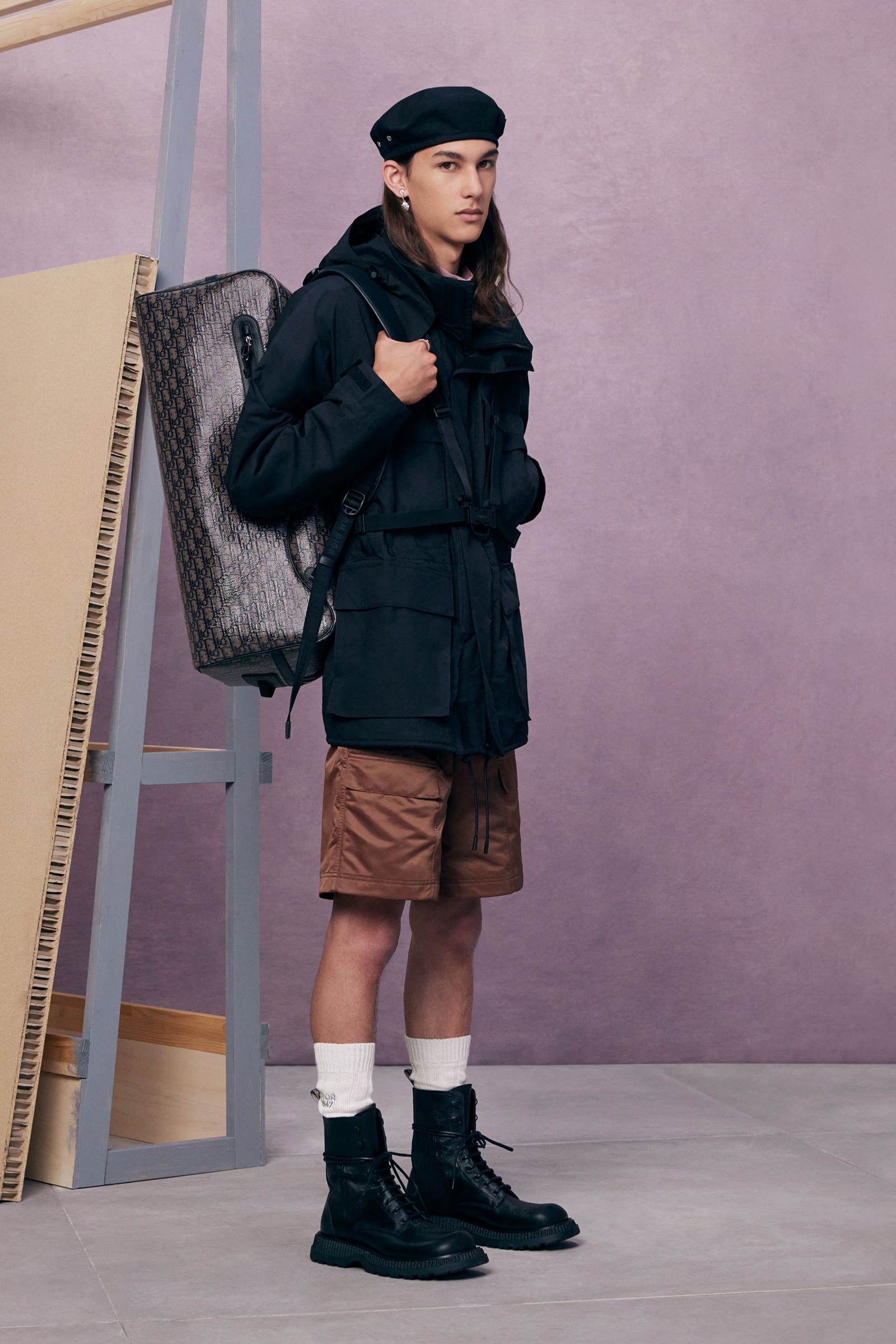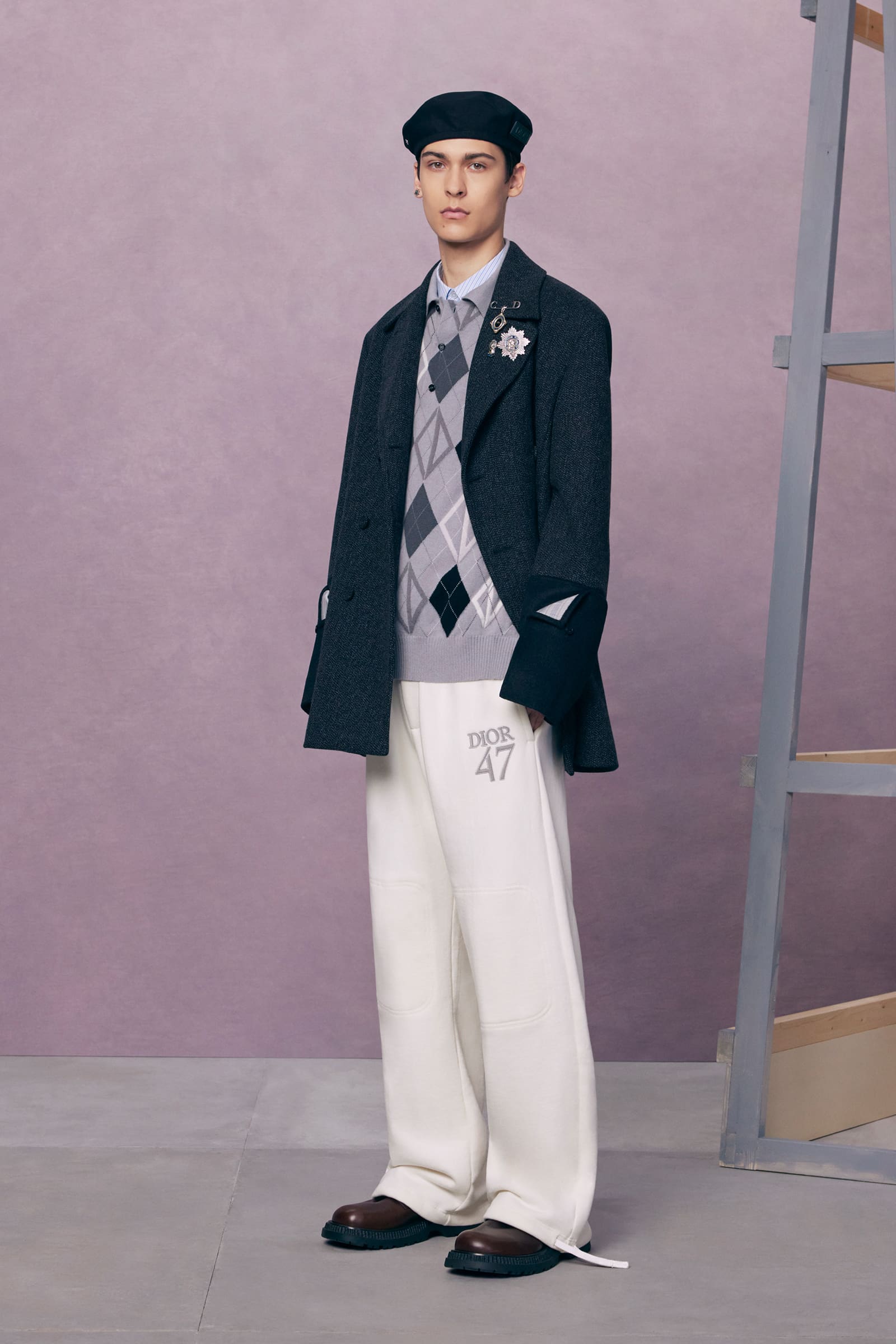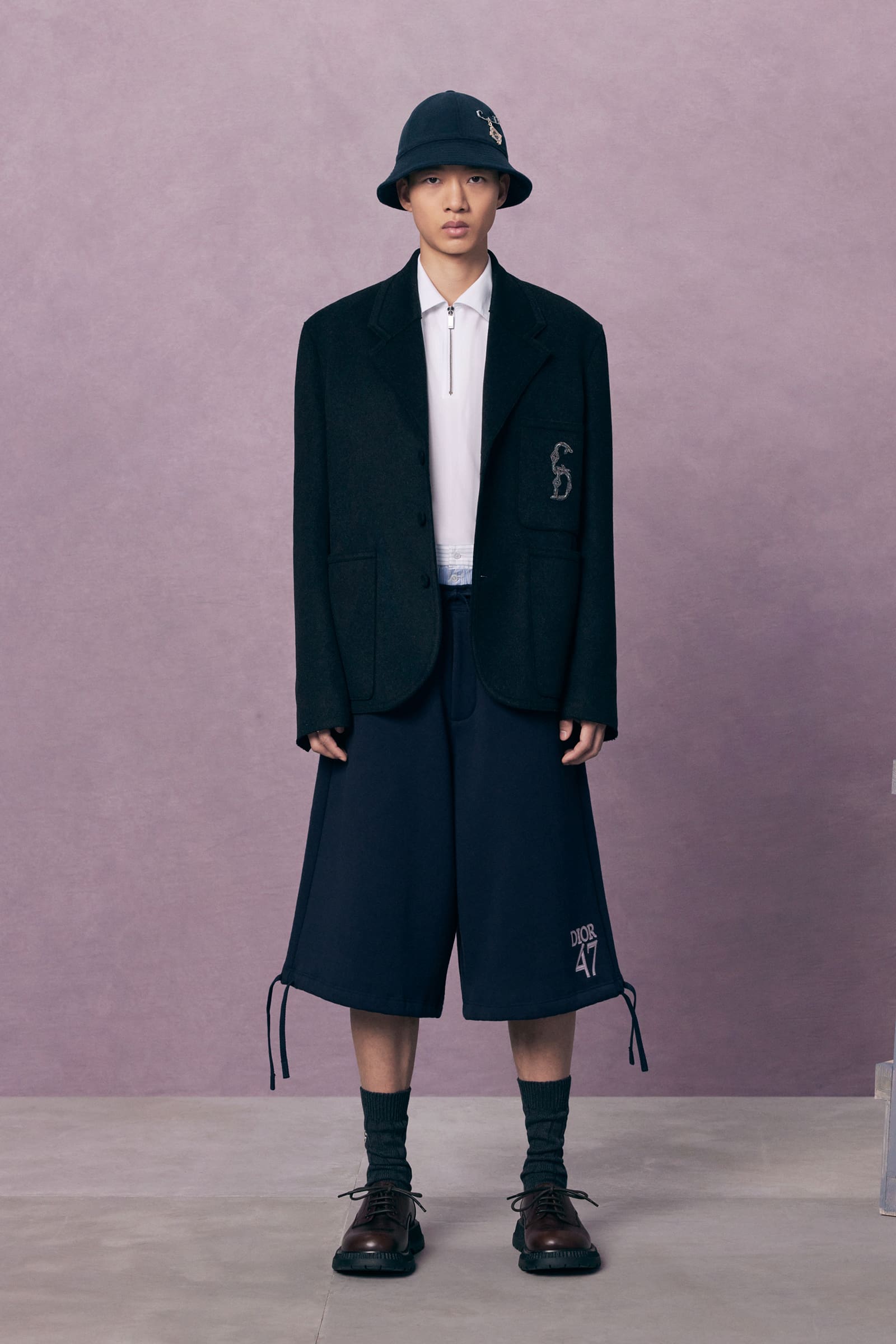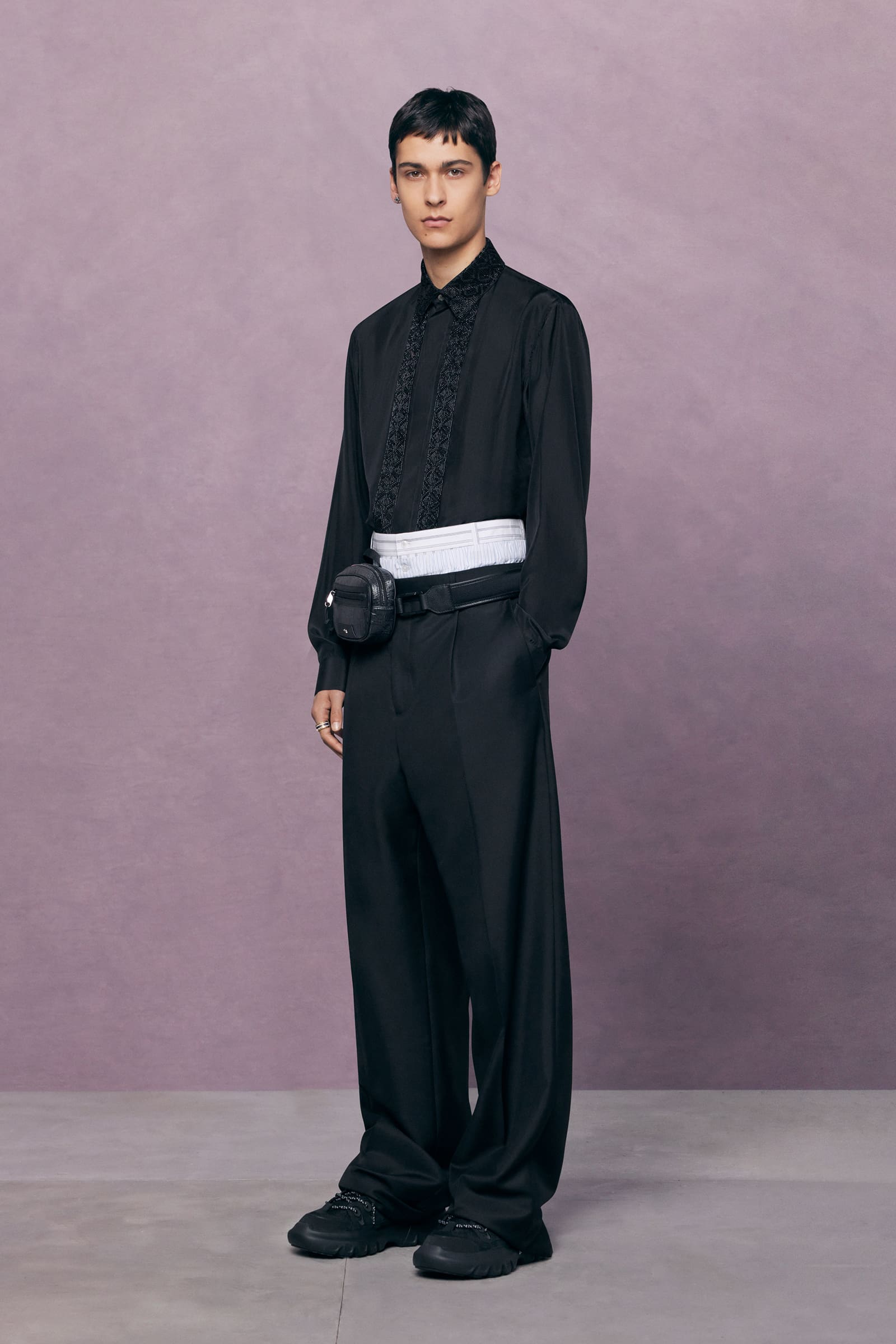
“Between stages. As if they’ve come off one set and are about to step onto another.” There’s a hint of a double-meaning in the “backstage” set that Kim Jones built for his pre-spring lookbook shoot. For one thing: a pre-anything collection is a “between-stages” season that has to multitask in covering a broad range of clothes and accessories. And for another: Jones revealed (or, rather, teased) that he’s also preparing to move into another stage in his career as Artistic Director of Dior Men. “The next show is my fifth anniversary. So I’m going to do something a bit different to mark the time.”
If the pre-co doesn’t exactly serve as his half-decade retrospective, it’s yet another design demonstration of how fluently Jones has created a lingua franca for Dior Men, while always maintaining his own British accent. This season, he mixed references to the 1980s Buffalo style of Ray Petri into a classic Dior color palette, played with the house logos, and accessorized with sparkling jewelry derived from the highest French national honors.
Jones is a walking encyclopedia of youth subcultures, knowledge he’s been layering into his work ever since he was a student. “I was looking at Buffalo because that was the first way I was introduced to this sort of London style of mixing high fashion with vintage as a young person,” he said. “Ray Petri was really the key figure in a collaborative group of people doing different things—photographers, filmmakers, singers. And, you know, I think that’s the way that I approach work. The thing is, you look at those photographs today and they are completely modern. They would make a skirt look like the most masculine thing in the world.”
(Briefly: Petri was the creative force who invented “styling” and “street-casting” for men’s editorial shoots—long before anyone was using those terms—in the British magazines The Face, i-D, and Arena. The book Buffalo Ray Petri, edited by Mitzi Lorenz and published by Westzone in 2000, is a good introduction for the fashion history-curious.)
That information applies to the way that Jones continuously puts together the evolving elements of his Dior wardrobe: boxer shorts under coats, worn with heavy military boots; half-kilts referencing both Buffalo skirts and the quasi Egyptian moments in the collection he showed at his recent spectacular in Cairo; his version of the original army-surplus MA-1 flight jackets that Petri’s Buffalo-style elevated from London gay working-class clubwear codes to mainstream fashion.
Come to the jeweled insignia, and the clever merge of British argyle sweater and Christian Dior lozenge-shaped logo, and you see Jones operating with his French couture house head on. He revived the logo from a 1960s design sourced in the Dior archives. The jewelry meanwhile—including CD safety-pinned medals pinned to jackets and a silver metal chain belt—is derived from the Grand Cross of the French Legion d’Honneur. It’s also something of an insider salute to the way Petri styled Camden antique brooches as pins on kilts and vintage coats in a seminal shoot by Marc Lebon for The Face in 1984.
Still, it’s relatability over reference that makes Dior Men a magnet for shoppers. The bigger picture here is how skilfully Kim Jones has figured out how to retain but soften tailoring so that it effortlessly marries with the casual way men want to wear things now. “I think it’s nice that we can play around with those codes and modernize them a bit,” he said. “Even if it’s black tie, you know, it’s not black tie straight-on. Look at Cannes,” he said, referring to the Film Festival. “When people go to those events they want to go smart and comfortable.”
This article was originally published on Vogue Runway.
- Simone Bellotti Is Bally’s Design Director
- 5 Things To Know About Alberta Ferretti’s Fellini-Infused Resort 2024 Show In Rimini
- 5 Things To Know About Louis Vuitton’s Aquatic Fairytale Cruise Show On Isola Bella
- Pharrell Williams’ Debut For Louis Vuitton Is Scheduled For The First Day Of Paris Men’s Week

